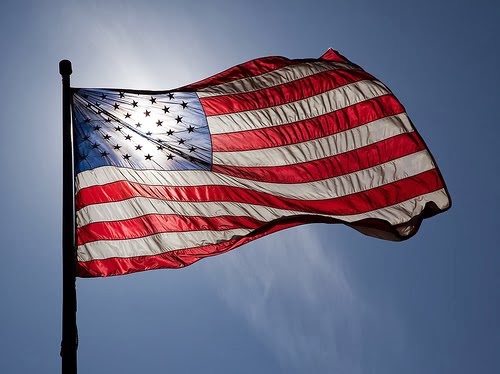One hundred years ago today, RMS Titanic hit an iceberg and sank.

Royal Mail Ship Titanic: As high as an eleven story building and nearly four city blocks long, the Titanic was one of the largest and most magnificent ships in the world (photographed April 10, 1912). (Photo Credit: Bettmann/CORBIS) (History.com)
The RMS Titanic was a British registered four funnelled ocean liner built for the transatlantic passenger and mail service between Southampton and New York. Constructed at the Harland and Wolff shipyard in Belfast, Ireland Titanic was, on her maiden voyage, the largest vessel afloat.
On April 10th 1912 the Titanic sailed from Southampton with 2,200 passengers and crew, four days later the Titanic collided with an iceberg and sank. 1500 people died and 700 survived.
Those facts - and many more, plus stories of the survivors, too - from a very cool site:
Encyclopedia Titanica.Titanic may have been a British-registered vessel but the passenger list shows that interest was international. Owned by JP Morgan (Founder of the International Mercantile Marine Company. (IMMC), his company held controlling interests in the White Star Line, the operator of the Titanic) demographic charts of the passengers of that fateful voyage include citizens of twenty eight countries. (
Go here for interesting facts and stats.)
RMS Titanic was not the first vessel to fall afoul of icebergs, even if it was the largest maritime disaster.
Ship-Iceberg Collisions before the Titanic Disaster The Titanic disaster was not the first ship-iceberg collision in the North Atlantic, only the worst in terms of lives lost. The first steamship named the “Savannah” successfully crossed the Atlantic in 1819 although she used her sail power for most of the journey. (3) Following the “Savannah’s” successful cross-ocean jaunt, European emigration to North America rapidly increased. Some of the ships they had so eagerly boarded collided with icebergs in fog that lasted for days and even weeks. Some shipping owners’ obsession with speed only increased the hazards of the ice and fog for the passengers. Following are three examples of ship vs. iceberg disasters before the Titanic disaster.

1. The “William Brown” Disaster
In April 1841 the first iceberg collision to unsettle the world occurred. The “William Brown’s” 17-man crew and her 64 passengers, mainly Irish emigrants, collided first with a pan of ice and minutes later with an iceberg, while traveling at the speed of around 10 knots, according to Brian Hill. (4). The ship went down in 20 minutes, taking with it 33 passengers, “because there were insufficient lifeboats for all.” When one of the two small boats was in danger of becoming swamped, the crew lightened it by throwing overboard 14 passengers. A murder trial followed that taxed the talents of politicians who worked to soothe public fears that they had a right to safety at sea while at the same time tried to protect the interests of the profitable emigration trade. The ethics of the case of the “William Brown” disaster are still cited today, according to Hill. (4)
2. The “SS Persia,” “SS Pacific” and “City of Glasgow” Ship-Iceberg Disasters
As noted above, by the middle of the 19th century, paddleboats were churning across the ocean, reducing the length of voyages to a matter of days. One such vessel, named the “SS Persia”, carried some 200 passengers from Liverpool. It collided with an iceberg in February 1856, but managed to limp to New York. Another vessel, named the “SS Pacific” had also set sail from Liverpool a few days before the “SS Persia”, but never reached New York and was presumed sunk in the same ice field that so badly damaged the “SS Persia.” The experience of these two ships led observers to deduce that a third vessel, named the “City of Glasgow”, which had left England in March 1854 carrying 500 passengers and was never heard from again, also went down in the ice off of Newfoundland. (4)...
Much more information
here. Just as the inititial reverberations from the RMS Titanic collision were felt around the world, so too has the legend and legacy from the disaster been international. One of my sources tells me that in lower Manhatten there is an obscure lighthouse - a direct legacy from the sinking. I can't find anything about that specific lighthouse, but I did find this, about a different memorial in New York:
Titanic Memorial, NY

On April 15, 1913, one year after the sinking of the Titanic, the Titanic Memorial Lighthouse and Time Ball, mounted atop the Seamen’s Church Institute, were dedicated to honor the passengers, officers, and crew who perished in the sinking. The dedicatory service opened with a hymn and prayer, and then Rt. Rev. David H. Greer, Bishop of New York, read the following lines of dedication: To the glory of Almighty God, and in loving memory of those passengers, officers, and crew who lost their lives in the foundering of the steamship Titanic, on April 15. 1912, I, David Hummell Greer, Bishop of New York, and President of the Seamen's Church Institute of New York, do solemnly dedicate the Titanic Memorial Lighthouse Tower. As its light by night shall guide pilgrims and seafaring men from every clime into this port, so may they follow Him who is the Light of Life across the waves of this troublesome world to everlasting life; and, looking at noon toward this place to note the time of day, may they remember that our days pass as the swift ships, and in view of the shortness and uncertainty of human life, strive to fulfill their duty well, as the beat preparation for Eternity. Amen.
The Titanic Memorial Lighthouse exhibited a fixed green light that could be seen throughout New York Harbor and down as far as Sandy Hook. Five minutes before noon each day, a time ball would be hoisted to the top of a steel rod mounted atop the lighthouse and dropped at the stroke of twelve as indicated over the wires from Washington, D.C. According to The Lookout, the magazine of the Seamen’s Church Institute, the Titanic Memorial Lighthouse would be a much-needed daily reminder, for “in a busy, careless city the average person so soon forgets.”...
There is much more on the history
here, and it IS fascinating.
The majority of passengers were American (212) with 45 British and 27 Canadian being the next largest contingents.
Today there will be commemorative events in Halifax, NS. From the
Winnipeg Free Press comes this:
Halifax careful to commemorate, not celebrate, anniversary of Titanic's sinking
By: Melanie Patten
HALIFAX - Almost a century ago, church bells tolled to herald the sombre arrival of cable ships carrying Titanic victims in Halifax harbour.
On Sunday morning they will ring again, nearly 100 years to the hour that the great ship vanished from sight, swallowed up by the dark waters of the North Atlantic on a moonless night.
Since the Titanic sank on April 15, 1912, Halifax has become a pilgrimage site for history buffs, romantics and those whose ancestors perished on the ship. The city is the final resting place for 150 of the Titanic's victims.
Organizers of commemorative events have been working for months to attract visitors to Halifax while maintaining the solemnity of the occasion.
[...]
On Saturday evening, a candlelight procession will begin on the city's harbourfront boardwalk outside the Maritime Museum of the Atlantic. The museum, which boasts the largest display of wooden Titanic artifacts in the world, launched a new exhibit on cable ships Thursday. The ships were dispatched from Halifax in the days after the sinking to pull bodies from the icy waters....
Much more here.
Halifax, NS's Fairview Cemetary can claim another connection to the sinking of the Titanic:
One hundred and twenty-one victims of the RMS Titanic sinking are interred at Fairview, more than any other cemetery in the world. Most of them are memoralized with small gray granite markers with the name and date of death. Some families paid for larger markers with more inscriptions. The occupants of a third of the graves, however, have never been identified and their markers contain just the date of death and marker number. Surveyor E. W. Christie laid out three long lines of graves in gentle curves following the contours of the sloping site. By co-incidence, the curved shape suggests the outline of the bow of a ship A complete listing of those victims buried in Fairview can be found here.
One of the more well-known Titanic markers is for an unidentified child victim, known for decades as The Unknown Child. No one claimed the body, so he was buried with funds provided by sailors of the CS Mackay-Bennett, the cable ship that recovered his body. The marker bears the inscription 'Erected to the memory of an unknown child whose remains were recovered after the disaster of the "Titanic" April 15th 1912'. In November 2002, the child was initially identified as 13-month-old Eino Viljami Panula of Finland. Eino, his mother, and four brothers all died in the Titanic disaster. After additional forensic testing, the unknown child was re-identified as 19-month-old Sidney Leslie Goodwin, an English child who perished with his entire family.
A grave marked "J. Dawson" gained fame following the release of the 1997 film Titanic, since the name of Leonardo DiCaprio's character in the film is Jack Dawson. Many filmgoers, moved by the story, left flowers and ticket stubs at Dawson's grave when the film was first released, and flowers continue to be left today. Film director James Cameron has said the character's name was not in fact inspired by the grave. More recent research has revealed that the grave actually belongs to Joseph Dawson, an Irishman who worked in Titanic's boiler room as a coal trimmer.
The Fairview Titanic graves also include the burial place and marker of William Denton Cox, a heroic steward who died while escorting third class passengers to the lifeboats.
Twenty-nine other Titanic victims are buried elsewhere in Halifax; nineteen in the Roman Catholic Mount Olivet Cemetery and ten in the Jewish Baron de Hirsch Cemetery. (More, and references to other Titanic-related sources, from Wiki here)
While the sinking of the Titanic made history, it also changed history.
From the
Official Blog of the US Coast Guard:
How the sinking of the Titanic changed the world
Wednesday, April 14, 2010
Posted by: Dan Bender

The RMS Titanic on its maiden voyage in 1912. (Coast Guard photo)
Everyone has heard about the “unsinkable” RMS Titanic, but [...] we have little connection to the disaster other than watching a movie or documentary. I[n] the world of 1912, the April 14th sinking of the world’s largest, most advanced ship shook the world.
Much like everyone remembers where they were on 9/11, the sinking of the Titanic captured the attention of the planet. It was possibly the first truly global disaster for mankind. With victims from North and South America, Europe, Asia, Australia and even Africa, not even the plague in the Middle Ages reached so many corners of the world.
The international outcry was strong and the world’s maritime powers acted swiftly. The U.S. sent the Navy to patrol the North Atlantic to search out icebergs and broadcast warnings. The following year the Revenue Cutter Service, predecessor to the modern Coast Guard, was placed in charge of the U.S. ice monitoring operations and still does so today, issuing warnings from February to July each year.
Also in 1913 the first Safety of Life at Sea Convention was convened and global shipping standards were set that greatly improved safety at sea.
Many of those implementations remain in affect. Still today SOLAS standards affect everything from life jackets to radios and the International Maritime Organization, the United Nations agency which safety standards, was also a product of the convention.
Ultimately, 13 nations committed to share the costs of monitoring ice in the North Atlantic and the International Ice Patrol was born....
Go check that out here.
More on that legacy of the sinking of the Titanic which changed maritime protocols:
First International SOLAS
Representatives of the major maritime nations thoroughly discussed the subject of patrolling the ice regions at the first International Conference on the Safety of Life at Sea (SOLAS), which convened in London on November 12, 1913 as a result of the Titanic disaster. Not surprisingly, Commandant Ellsworth Bertholf represented the United States as a member of the 12-person delegation to this convention. On January 30, 1914, the convention “provided for the inauguration of an international derelict-destruction, ice observation, and ice patrol service.” (8) This service was to consist of vessels that would patrol the ice regions during the season of iceberg danger—typically February to July each year--and attempt to kept the transatlantic lanes clear of derelicts during the remainder of the year. A derelict is a ship abandoned at sea that can drift for many years, even circum-navigating the North Atlantic Ocean several times and creating a serious hazard to navigation. They are mined and sunk.
The US Government was invited by the SOLAS convention to undertake the management of this triple service (derelict destruction, ice observation, and ice patrol service), with the expense to be defrayed by the 13 nations signatory to the SOLAS of 1914. The convention was not scheduled to go into effect until July 1, 1915, however, so “the government of Great Britain, on behalf of the several nations interested, made inquiry on January 31, 1914, as to whether the United States would undertake the patrol at once under the same mutual obligations as provided in the convention.” (8) US President Woodrow Wilson, who succeeded President William Taft, “favorably considered the proposition, and, on February 17, 1914, directed that the (then) Revenue Cutter Service begin the International Ice Observation and Patrol Service. Each year since then, with exception of the wartime years, the US Coast Guard has maintained a patrol.” (8)
SOLAS and International Ice Patrol Today
The 1914 version of SOLAS was superseded by SOLAS 1929, SOLAS 1948, SOLAS 1960 (the first adopted under the auspices of the International Maritime Organization--IMO) and SOLAS 1974. (9) SOLAS 1974 is still in force today, but has been amended and updated many times. (10) The US Department of State does the actual billing of each nation for its share of the cost of operating the International Ice Patrol. In recent years, the cost share for each participating nation has been based on each nation’s percentage of the total cargo tonnage transiting the patrol area during the ice season averaged over the previous three years. The International Ice Patrol has maintained broad-based international support for over eight decades despite changing operational and technological factors. Its longevity has been attributed to “the soundness of the basic concept. As of 2005 the 17 governments contributing to the Ice Patrol include Belgium, Canada, Denmark, Finland, France, German, Great Britain, Greece, Italy, Japan, Netherlands, Norway, Panama, Poland, Spain, Sweden, and the United States.” ...
A REALLY interesting discussion can be found here.
For most of us not born til the latter part of the 20th century, the disaster that was the sinking of the Titanic only piqued our interest, and garnered major attention, following the release of the James Cameron movie. That movie ensures that everybody now knows what happened around midnight one hundred years ago.
The scope of such a disaster is almost unfathomable, but Titanic the movie retold the tale in very human terms, interweaving the personal love stories, and tales of individual bravery, against the backdrop of the enormous, unforgiving ocean. Yes, it was epic in every sense of the word.
And then there is *that* song which ensures that the legend will go on and on...and on..
Now that's a legendary legacy!!!
Every night in my dreams
I see you, I feel you
That is how I know you go on
Far across the distance
And spaces between us
You have come to show you go on
Near, far, wherever you are
I believe that the heart does go on
Once more you open the door
And you're here in my heart
And my heart will go on and on
There are, of course, many sources for Titanic facts and trivia. Apart from those I used and have linked to within this piece, I also used:
TITANIC FACTS: EVERYTHING YOU EVER WANTED TO KNOW ABOUT THE RMS TITANIC
Jam-packed with really amazing stats and facts. Go look!
10 Facts about the Titanic that you don't know
One of those facts was about the dogs on board the Titanic. Who was saved, and who was not.
Something tells me that long after this twenty first century is done, and direct descendants of the survivors of the Titanic disaster are long gone, the historians will still be poring over all the minute details and the Coast Guard will still be fine-tuning procedures meant to ensure the world never witnesses another such disaster.
And oh yes, Celine's mammoth hit will still be played on the golden oldie shows of the future.
[Bratnote: My thanks to the encyclopedic brain, who I now refer to as the "Brat Version of Coles Notes,' who pointed me in the right direction in my original research - Celine's for you!]




























